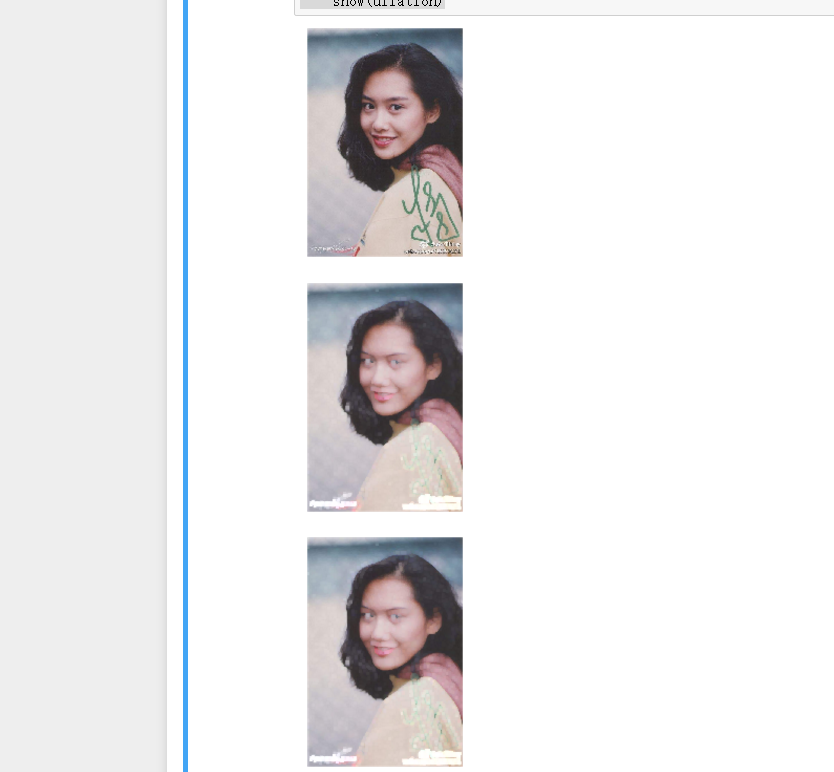OpenCV:图像的腐蚀和膨胀
图像的腐蚀和膨胀实际上是利用卷积进行计算,首先导包:
import numpy as np import cv2 import matplotlib.pyplot as plt def show(image): plt.imshow(image) plt.axis('off') plt.show() def imread(image): image=cv2.imread(image) image=cv2.cvtColor(image,cv2.COLOR_BGR2RGB) return image
然后生成一个正方形的核:
kernel=cv2.getStructuringElement(cv2.MORPH_RECT,(5,5)) print(kernel)
输出:
[[1 1 1 1 1] [1 1 1 1 1] [1 1 1 1 1] [1 1 1 1 1] [1 1 1 1 1]]
当然我们作运算的时候都是使用的正方形的核,这里也展示下生成椭圆核的方法:
kernel=cv2.getStructuringElement(cv2.MORPH_ELLIPSE,(10,10))#这里生成的是椭圆 print(kernel)
生成十字形的核:
kernel=cv2.getStructuringElement(cv2.MORPH_CROSS,(5,5))#这里生成的是十字形 print(kernel)
利用卷积进行图像的腐蚀:可以使黑色的点变大
kernel=cv2.getStructuringElement(cv2.MORPH_RECT,(10,10)) ero=cv2.erode(image,kernel) show(ero)
循环进行多次腐蚀:
show(image) kernel=cv2.getStructuringElement(cv2.MORPH_RECT,(10,10)) for i in range(2): ero=cv2.erode(image,kernel,iterations=i+1) show(ero)
图像的膨胀,使白色的点变大,用于去除图像当中的黑点:
show(image)#利用卷积将图像进行膨胀,求解的是区域最大值,腐蚀则是求解的区域最小值 dilation=cv2.dilate(image,kernel) show(dilation)#用于去除图像当中黑色的小点
循环去除:
image=imread('123.jpg') show(image) kernel=cv2.getStructuringElement(cv2.MORPH_RECT,(21,21)) for i in range(3): ero=cv2.erode(image,kernel,iterations=i+1) show(dilation)
下面是处理朱茵图片进行膨胀的效果:


 浙公网安备 33010602011771号
浙公网安备 33010602011771号